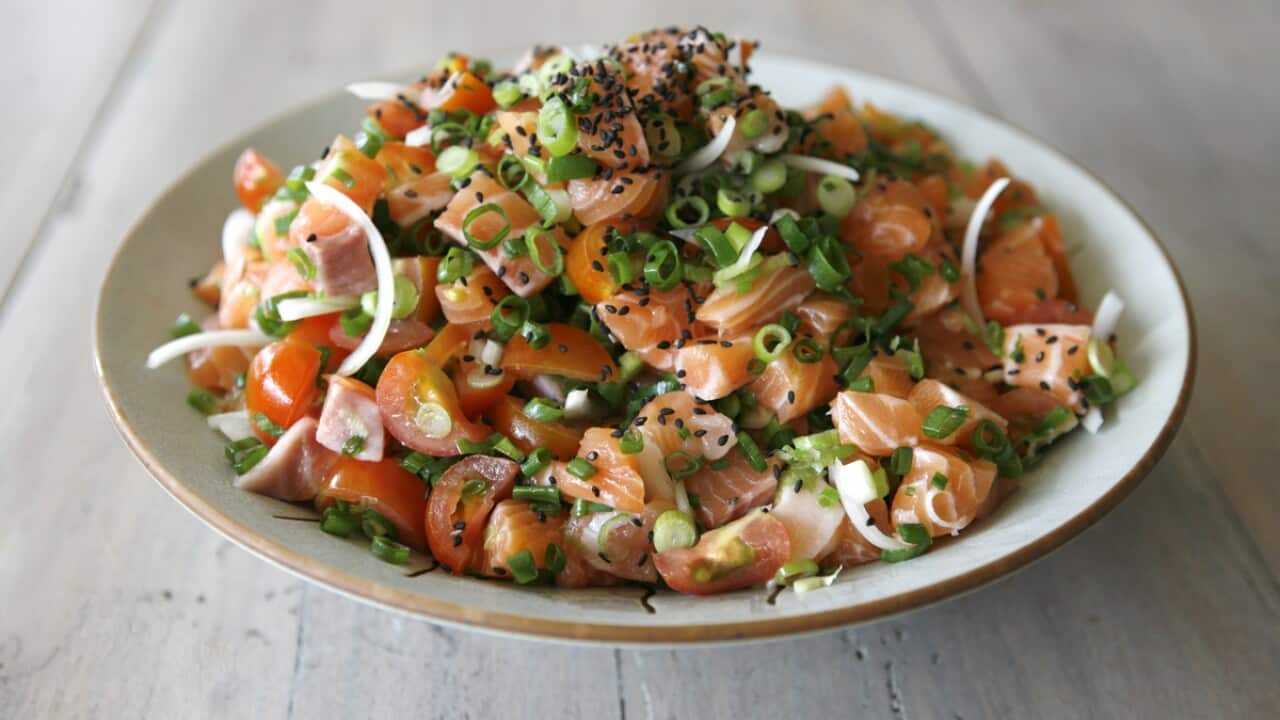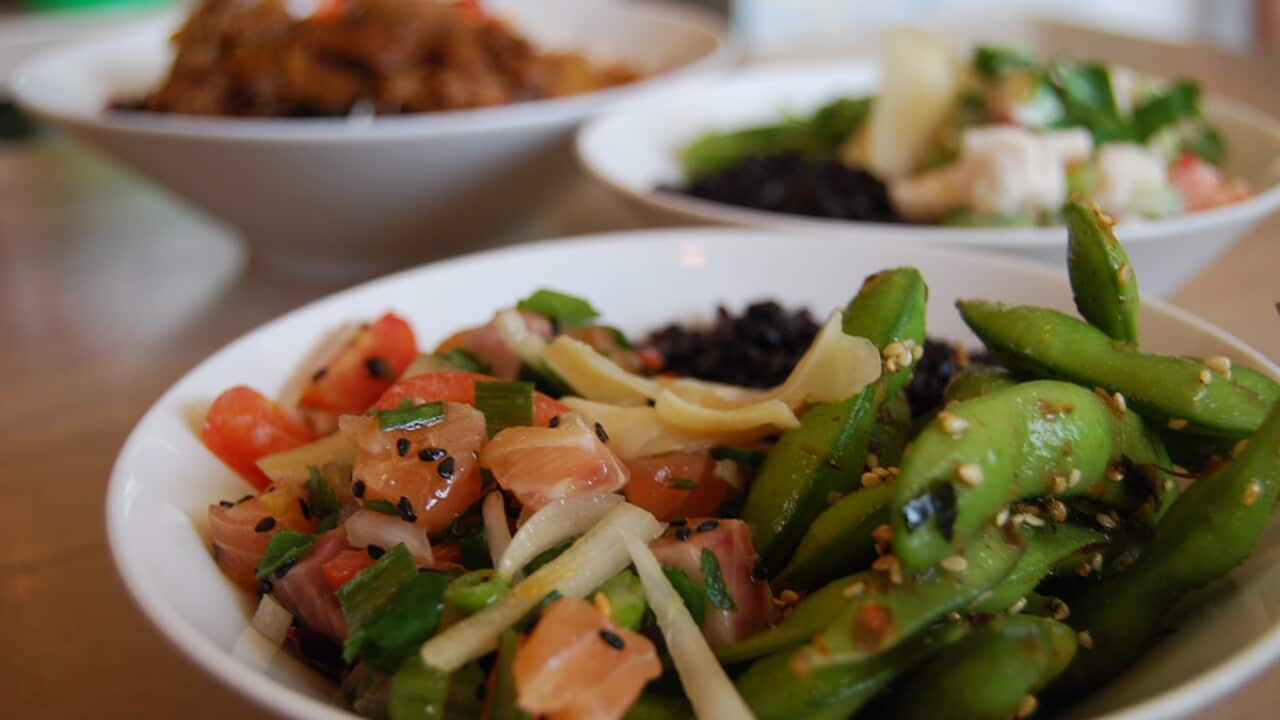Poké (pronounced “poh-kay”) has exploded around the country with the same ferocity as burgers, tacos and fried chicken. The difference with this fast food trend is that, unlike its predecessors, it’s healthy. Super healthy.
Hailing from Hawaii, but featuring strong Japanese influences, poké is, essentially, a sushi bowl built with rice, raw fish that has been lightly cured in soy, and other condiments like vegetables, toasted sesame seeds, avocado, pickled ginger, seaweed, sauces and seasonings.
Like its health food comrades - the sushi bowl, acaii bowl and burrito bowl - poké is often served this way, too.
“It’s healthy food that you can eat everyday without feeling guilty,” says Ellen Arkinstall, manager of Love Poké in Coogee, NSW. “It’s raw fish, which is pure protein, usually served with rice. We take a bit of a healthier avenue and use black organic rice – we don' cook our rice with mirin and sugar to make sticky rice. It’s a good, healthy carb that makes you feel full for really long.”
READ MORE

The Aloha Way poké bowl
The lovechild of Candace Wu and her husband Sam Constantinou, Love Poké was the product of romance abroad. Wu and Constantinou travelled throughout Hawaii and Japan where they were exposed to all the components of poké before Constantinou proposed to Wu in Japan and the couple got married in Hawaii.
Freshness and high quality produce are the secrets to mastering poké, says Arkinstall, who believes home cooks armed with the right ingredients can easily recreate the bowls.
“You just have to take care of your fish, so something I learned is you cant slap it around, you have to wipe it down with a paper towel and use a really sharp knife; this all makes a big difference to its taste. And, getting the balance right in the sauces.
"There’s no rules; you can make it whatever you want, really. If you want to make it at home, you could and be really creative about it."
Poké outlets have sprouted right across the country, many of which follow the L.A. trend of made-to-order bowls, stacked with ingredients that the customer chooses.
There’s no rules; you can make it whatever you want, really. If you want to make it at home, you could and be really creative about it.
“The way we do it is more traditionally Hawaiian, by adding the fish to the sauce in the morning so that the fish has a chance to marinate and really take on the flavours,” Arkinstall says.
Christian Robertson of Melbourne’s Poké Me agrees that sourcing high quality fish, the star of the poke, is paramount.
“Without a doubt, the quality of ingredients is the most important part of poké – it’s everything,” he says.
Robertson is co-owner of Poké Me, one of Melbourne's first poké joints. Championing Japanese flavours rather than L.A. ones, they incorporate ingredients like edamame, shichimi togarashi (Japanese 7-spice) mayo, wasabi cream, and a citrusy yuzu sauce.
"We found a lot of poké was fried wontons etc., and we wanted to steer away from that and make it more about healthy fast food.”
Whichever way you poké, be sure to lay your hands on the freshest produce you can.




